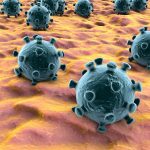Natural Treatments for Common Pediatric Conditions
Dr. Ancharski
After 27 years of practice (and 25 years of parenting), I find children’s spontaneity, honesty, and zest for life a welcome change from my adult patients. Generally, children’s unpolluted vital force is especially responsive to natural approaches. It is this responsiveness that has made caring for children a particularly rewarding aspect of practicing medicine.
Pediatric patients fall into one of three major groups, each requiring different levels of treatment:
- Healthy—normal growth and development, usually breast-fed, basic good health with the usual and common pediatric conditions.
- Allergic—sensitivity reactions to foods and the environment, often not breast-fed, often lagging in growth and development, disordered immune and nervous systems, prone to upper respiratory and skin conditions.
- Sickly—one or more major diseases, compromised immune system, chronically ill, often history of prematurity, low birth weight, or congenital anomalies, poor growth and development.
Children with frequent, recurrent, or chronic illness should be tested for food and environmental sensitivities, and heavy metal exposure.
Optimal pediatric care begins by enhancing the overall health of the father and especially the mother prior to conception. Good prenatal care includes natural prenatal vitamins, adequate calories and protein, and preferably organic foods with high antioxidant content. Preventing anemia, gestational diabetes, toxemia, and prematurity, while supplying adequate EFA’s and calcium-magnesium are important. Having assisted the delivery of over 1,000 babies (including my children ages 4, 22, and 24), I firmly believe natural childbirth delivery when possible enhances both bonding and future pediatric health.
Breastfeeding is critical in the first year, lowering the incidence of allergies, including asthma and eczema, upper respiratory infections, earaches, and ADHD. Highly allergic foods such as dairy, peanuts, excess gluten, corn, and even soy should be avoided. Sugars, including fruit juices should be used sparingly. Childhood obesity is epidemic and all children need to be directed toward a varied, organic diet high in flavonoid-rich vegetables and fruits, while being directed away from “bad fats,” simple sugars, and processed foods. Additionally, the less TV, video games, computer use, and the more outside play, loving interaction and hugs, the healthier the child will be. “It takes a village to raise a child” is truer now than ever. Always carefully assess the child’s family and social environment.
Starting with toddlers, I recommend a multi-vitamin mineral supplement with adequate B vitamins, calcium, magnesium, iron, zinc levels, and minimal sugar content. I currently use “Sea Buddies” from Enzymatic Therapy. Eclectic Institute makes many specific child-friendly products, especially botanicals. Hylands and Borion have specific condition-based pediatric formulas for the homeopathic novice. Nordic Naturals carries high quality, flavored EFAs.
In the following section I will outline some basic approaches to common pediatric conditions. (I find that naturopathic physicians’ comfort levels with using homeopathic medicines in practice spans the range from zealots, true believers, converts, and dabblers, to skeptics, non-believers, and those aghast at its inclusion in scientific medicine. I can assure you that pediatric practice will convert the non-believers and skeptics. A good resource is Dana Ullman’s Homeopathic Medicine for Children and Infants.)
Colic: homeopathic combinations featuring colcynthis and chamomilla; mother cut out dairy if nursing; herbal catnip; chamomile; peppermint; ginger; anise in drop doses; change infant formulas if bottle-fed (i.e. organic, soy), warm compresses.
Teething: homeopathic chamomilla alone or in combinations; cold carrot sticks (not too small); late teething/small stature use indicated cell salts (i.e. calc phos
Introduction of foods: no earlier than six months old, preferably once teeth appear; start with organic, low-allergenicity vegetables such as sweet potato, squash, carrots; four to six weeks later expand above and add organic, low-allergenicity fruits such as bananas, apples, and pears; quinoa; finally after another four to six weeks add proteins such as organic tofu, fish, chicken, etc. If weaned continue organic formula or modified goat milk as the major food source up to at least 12 months old.
Gastrointestinal problems, Diarrhea: cut out dairy, neutralizing cordial (Glyconda) botanical formula, Kaopectate (original pectin/clay formula), carob powder, homeopathic nux vomica and arsenicam; “diarrhea diet” (i.e. tea, toast, apples, vegetable broths, etc.); cats claw with peppermint and chamomile as tea if chronic. Rehydrate.
Diaper rash: cornstarch powders externally, change diapers frequently, calendula cream, probiotics, cloth diapers.
Accidents: childproof environment; use car seats; botanical first aid creams such as aloe, calendula; comfrey for cuts and scrapes; homeopathic arnica for sprains and contusions; parents kiss the “owies”.
Burns: aloe topically; homeopathic vertica.
Bug bites: homeopathic apis for stings, ledum for punctures (i.e. spider).
Poison oak/ivy: homeopathic rhus tox, topical aloe, grindelia, avena.
Eczema: cut out dairy; EFAs (GLA, DHA/EPA, cod liver oil), multivitami—especially vitamin A/carotenoids, Vit D, zinc, botanicals topically (calendula, chamomile, comfrey, licorice, aloe), test for food sensitivities.
Fevers: tepid sponge bath, enema, wet sock treatment, fluids, aconite for sudden onset, also consider arsenicum, belladonna, bryonia, ferrum phos, chamomilla, gelsemiusm, judicious (rare) use of NSAIDS.
Flus: (older children) botanical eupatorium and lomatrium with drops of gelsemium; homeopathic flu remedies.
Colds: homeopathic ferrum phos, allium cepa, kali bichromium, pulsatilla, echinacea and elderberry botanicals, vitamin C, Larix, wet sock treatment.
Upper Respiratory Infections: cut out dairy, if frequent test for sensitivities, echinacea, licorice, astragalus elderberry lomatium osha glycertie extracts, botanicals such as drosera, mullein, grindelia, cherry bark, plearing root, stillingia lingamint over chest and mid scapular region, wet sock treatment, larix, vitamin A/carotenoids, vitamin C, nebulizer treatments with licorice, muco-mist.
Earaches: cut out dairy (reduces incidence by 50-60%); garlic; mullein; hypericum oil drops (make sure there is no perforation); homeopathic aconite, belladonna, chamomilla, and pulsatilla cover the majority of cases; endonasal technique.
Chronic hayfever, mucousy allergies: cut out dairy; test for food and environmental sensitivities; buffered vitamin C with bioflavonoids; homeopathic sabadilla, euphrosia, allium cepa, ambrosia; for older child freeze-dried nettles, quercetin; increase water intake; use HEPA air filters.
Asthma: cut out dairy, peanuts, and eggs; test for food and environmental sensitivities; use HEPA air filters, clean for molds, dust, roaches; vitamins B6 and C, magnesium, selenium; omega-3 oils; B12 I.M. protocol; botanical combination with licorice, ephedra, grindelia, lobelia, tylophora, with cayenne as activator; prescription bronchodialators as needed.
ADHD: No television; cut out dairy, all additives; test for food and environmental sensitivities and heavy metal exposure; channel physical activity (i.e. swimming, soccer, focusing skills); Lendon Smith protocol—50 mg B vitamins oral or IM, Cal/Mag 2:1; newer EFA profile testing and corrective supplementation especially DHA; green tea; no stimulant or anti-depressant drugs except short-term in severe, unresponsive cases; younger children—chamomile and passionflower tea, homeopathic calms forté; older children—L-Trytophan; start early, especially with family history.
Brief discussion of immunization
In this legitimate debate about whether to immunize children or not, there are two opposing positions: No immunizations whatsoever versus full Center for Disease Control (CDC) recommendations. Philosophically, I am against the idea of artificially manipulating the body’s intricate natural immune response. In a perfect world of abundance, little travel, 100% breastfeeding for one year, organic diets, pristine environment, etc., the need for immunizations would diminish. However, from a practical standpoint, in our world of poverty, environmental decline, processed foods, worldwide travel, compromised health and immune systems, allergies, etc., the risks and benefits of vaccinations must be carefully assessed.
I take a “middle of the road” position, often attached to both sides of the argument. I take issue with the addition of more immunizations at earlier ages, usually done in multiple combinations at each visit. From the history of vaccinations, we have learned that there is an ongoing need to improve vaccine make-up and remove additives, preservatives, and impurities. Homeopathic nosode administration, however beneficial, does not equate to or replace the actions of immunizations. Immunization issues related to rising incidence of autism and the mercury preservative thimersol are unresolved and require discussion beyond this article.
In breast-fed, healthy infants, immunizations can be initiated later—from 6-18 months—or once weaned or foods have been introduced. I only recommend giving immunizations when the child is healthy and giving the DTaP and polio on separate visits. The tetanus immunization should be given before child crawls or no later then onset of walking. The pertussis vaccine has been improved; in the past I’ve see strong reactions to it, even recommending only the DT (DPT without pertussis). However, recent experience here in Kauai with numerous difficult whooping cough cases has convinced me to add it back in (now called DTaP). As for the MMR (measles, mumps, and rubella), I either do it later, at 24 months, or only pre-puberty rubella for females and mumps for males. The inactivated polio vaccine is improved over the past versions (although I miss the oral); I recommend it at 12 months and repeat at preschool age.
Recent research has shown support for this delayed approach in breast-fed, low risk infants, indicating that not only does breastfeeding confer significant early passive immunity via maternal immunoglobulins, but that too early immunization actually elicits weaker antibody response in these infants. In many infants the final recommended vaccine dose can be eliminated if adequate antibody titres are found on testing. Currently, I don’t use the chickenpox, haemophilus, pnemococcal, or hepatitis vaccines (unless the mother is hepatitis B positive), as these are conditions that can be adequately treated and for which breastfeeding gives strong passive immunity. The CDC immunization schedule is in part based on compliance issues. The use of immunizations for non-breastfed, allergic, higher risk children is more complex. They potentially may benefit most from the protection yet have higher risks of negative reactions; it’s a catch-22. I recommend the CDC schedule for these children, yet not with full confidence.
 Dr. Ancharski graduated from NCNM in 1979, followed by the very first naturopathic residency (in obstetrics and family medicine). His teachers included such pillars of the profession as John Bastyr, O.G. Carroll, William Turska, R. Noble, A.W. Kuts-Chereaux, William Babnick, Bill Mitchell, John Ettinghausen and Jeffrey Bland. He has served as clinic director at NCNM, and as a clinical professor at both NCNM and SCNM. He co-founded Eclectic Institute and founded BioGreen-One Earth, One Body, both centers of research and development of nutritional and botanical medicines. He had an extensive OB/family practice in Portland, Ore. (establishing the Natural Childbirth and Family Clinic) as well as a renowned nutritional/botanical medicine practice in Tucson, Ariz. (the White Dove Clinic). Dr. Ancharski currently maintains a rural general practice on the north shore of Kaua’i, Hawaii.
Dr. Ancharski graduated from NCNM in 1979, followed by the very first naturopathic residency (in obstetrics and family medicine). His teachers included such pillars of the profession as John Bastyr, O.G. Carroll, William Turska, R. Noble, A.W. Kuts-Chereaux, William Babnick, Bill Mitchell, John Ettinghausen and Jeffrey Bland. He has served as clinic director at NCNM, and as a clinical professor at both NCNM and SCNM. He co-founded Eclectic Institute and founded BioGreen-One Earth, One Body, both centers of research and development of nutritional and botanical medicines. He had an extensive OB/family practice in Portland, Ore. (establishing the Natural Childbirth and Family Clinic) as well as a renowned nutritional/botanical medicine practice in Tucson, Ariz. (the White Dove Clinic). Dr. Ancharski currently maintains a rural general practice on the north shore of Kaua’i, Hawaii.








